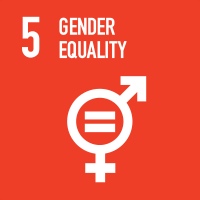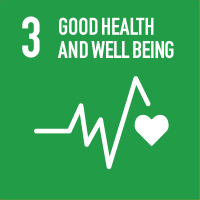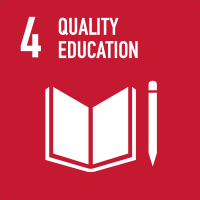Studying at the University of Verona
Here you can find information on the organisational aspects of the Programme, lecture timetables, learning activities and useful contact details for your time at the University, from enrolment to graduation.
Study Plan
The Study Plan includes all modules, teaching and learning activities that each student will need to undertake during their time at the University.
Please select your Study Plan based on your enrollment year.
1° Year
| Modules | Credits | TAF | SSD |
|---|
2° Year It will be activated in the A.Y. 2025/2026
| Modules | Credits | TAF | SSD |
|---|
3° Year It will be activated in the A.Y. 2026/2027
| Modules | Credits | TAF | SSD |
|---|
1 module between the following1 module among the following| Modules | Credits | TAF | SSD |
|---|
| Modules | Credits | TAF | SSD |
|---|
| Modules | Credits | TAF | SSD |
|---|
1 module between the following1 module among the following| Modules | Credits | TAF | SSD |
|---|
Legend | Type of training activity (TTA)
TAF (Type of Educational Activity) All courses and activities are classified into different types of educational activities, indicated by a letter.
Nutrition biochemistry (2024/2025)
Teaching code
4S010584
Teacher
Coordinator
Credits
6
Language
Italian
Scientific Disciplinary Sector (SSD)
BIO/10 - BIOCHEMISTRY
Period
2° semestre dal Mar 3, 2025 al Sep 30, 2025.
Courses Single
Not Authorized
Learning objectives
The course aims to introduce the student to the knowledge of the biomolecular processes underlying the functions of the cell and the organism. The student will acquire the knowledge necessary for the understanding of chemical transformations, an essential requirement for the study of the structure-function relationships of biological macromolecules and metabolism. Related to this is the unraveling of the molecular basis of the biochemical fundamentals of nutrition, the properties of metabolites, nutrients and specific metabolic pathways involved in the health of the individual, taking into account the physical activity/movement necessary for the fundamentals of the food pyramid.
Examination methods
Written part with multiple choice and open questions to verify he overall degree of knowledge of the subject of this course.
Prerequisites and basic notions
General chemistry and organic chemistry elements
Program
The course has two main interrelated focuses: the biochemical mechanisms of nutrition and those related to physical exercise. All the individual topics are declined according to the two areas listed above. Proteins. The amino acids. Peptide bond. Structural levels of proteins. Fibrous (collagen and keratin) and globular proteins (myoglobin and hemoglobin). Myosin and actin. Thick and thin filament structure. The antibodies. Enzymes. Chemical reactions and reaction rates. Difference between chemical and enzymatic catalysis. Coenzymes: functional significance and relationship with water-soluble vitamins. Mechanism of action of enzymes. Outline of enzymatic kinetics. Nucleotides. Structure and functions of nucleotides. Nucleic acids. Coenzymes. The adenyl nucleotides. Carbohydrates. Monosaccharides. Natural oligosaccharides. Polysaccharides. Glycogen. Introduction to metabolism, reaction equilibrium, compounds with high energy content bonds and coupled reactions, catabolism and anabolism. Carbohydrate metabolism. Digestion of carbohydrates. Glucose Introduction to the possible fate of glucose-6 phosphate. Glycolysis. Glycogenolysis and glycogenosynthesis. Pentose phosphate pathway, NADPH and oxidative stress control. Gluconeogenesis. Hormonal regulation of the blood glucose level. Fates of pyruvate. Lactic and alcoholic fermentation. Krebs cycle. Respiratory chain and oxidative phosphorylation. Energy balance of glucose oxidation. Lipids. Fatty acids. Essential fatty acids. Triglycerides. Membrane lipids: phospholipids. Cholesterol. Digestion of lipids. Transport of lipids. Lipoproteins. Lipid metabolism. Mobilization of triglycerides, role of carnitine. Beta oxidation of fatty acids. Formation of ketone bodies: physiological significance and their effects on acid-base balance. Energy balance of lipid catabolism. Biosynthesis of fatty acids. FAS complex. Comparison of biosynthesis and beta oxidation of fatty acids. Cholesterol metabolism. Protein metabolism. Protein digestion. General catabolism of amino acids. Transamination, oxidative deamination and decarboxylation. Fate of the amino acid skeleton: glucogenic and ketogenic amino acids. Urea cycle. Food, human nutrition and muscle metabolism. Interrelationships with other tissues. The function of phosphocreatine. Aerobic and anaerobic metabolism. Glucose-alanine cycle. Cori cycle. Energy sources during muscle activity. Muscle glycogen. Interrelationships with the liver. Energy needs of the neuron. Ketone bodies and muscle proteins as energy sources.
Bibliography
Didactic methods
In presence lessons with the possibility of interacting directly with the teacher.
Learning assessment procedures
Written and composed of: -10 multiple choice questions (1 correct one) -1 metabolic mechanism -2 open questions
Evaluation criteria
correctness, clarity, rigor and argumentative logic
Criteria for the composition of the final grade
To get the pass you need to do correct 8 out of 10 multiple choice questions and the biochemical mechanism. The answers to the other questions contribute to make up the final grade.
Exam language
italiano



